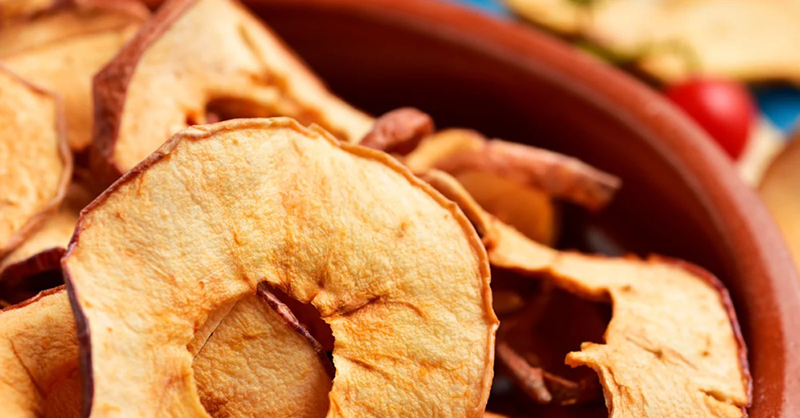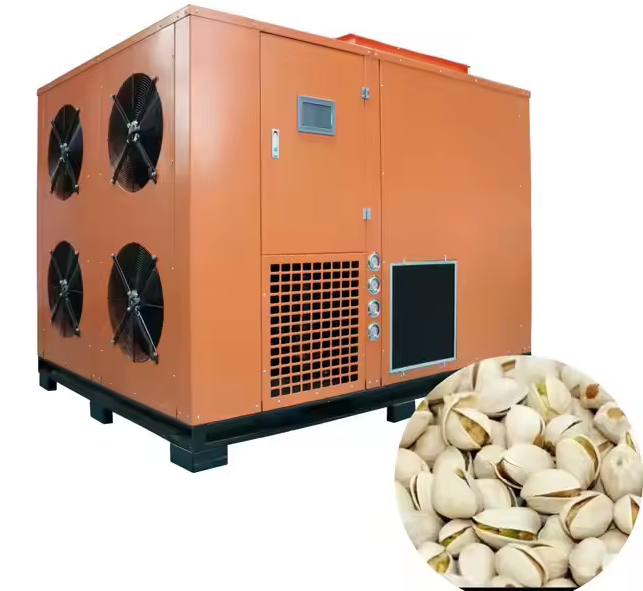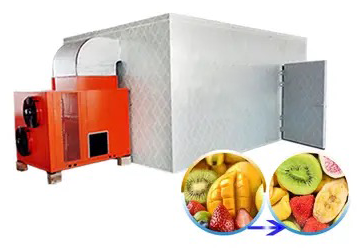
Content Menu
● Understanding Food Dehydrators
● Types of Food Dehydrators
>> Condenser Dryers
>> Heat Pump Dryers
● Comparison Table
● Choosing the Right Dehydrator
● Additional Considerations
>> Maintenance Tips
>> Common Uses for Dried Foods
● Conclusion
● FAQs
>> 1. What is a food dehydrator?
>> 2. How long does it take to dehydrate food?
>> 3. Can I use my oven instead of a dehydrator?
>> 4. What types of foods can I dehydrate?
>> 5. Is it safe to dehydrate meat?
● Citations:
Food dehydrators are essential appliances for preserving food by removing moisture, which extends its shelf life and enhances flavors. In the context of food dehydrators, two popular types are condenser dryers and heat pump dryers. Understanding the pros and cons of each can help consumers make informed decisions about which appliance best suits their needs.

Understanding Food Dehydrators
Food dehydrators work by circulating warm air around food items at low temperatures, typically between 90°F and 175°F (32°C to 80°C). This process effectively removes moisture while preserving nutrients. The primary components of a food dehydrator include:
- Heating Element: Generates the heat required for drying.
- Fan: Circulates air to ensure even drying.
- Trays: Hold the food items during the drying process.
- Vents: Allow moisture to escape, facilitating efficient drying.
Types of Food Dehydrators
Condenser Dryers
Condenser dryers utilize a heat exchanger to condense moisture from the air inside the dehydrator. Here are some pros and cons:
Pros:
- Energy Efficiency: Generally more energy-efficient than traditional dryers, as they recycle heat.
- No Venting Required: Can be placed anywhere in the kitchen since they do not require external venting.
- Consistent Drying: Provides consistent temperature control, which is crucial for evenly dehydrating food.
- User-Friendly: Many models come with preset programs for different types of food, making them easy to use for beginners.
Cons:
- Longer Drying Times: May take longer to dry foods compared to other methods due to lower temperatures.
- Higher Initial Cost: Typically more expensive upfront than simpler models.
- Limited Capacity: Some condenser models may have smaller capacities, making them less suitable for bulk dehydration.
Heat Pump Dryers
Heat pump dryers work by transferring heat from the surrounding air into the dehydrator, using a refrigeration cycle. Here are their pros and cons:
Pros:
- Fast Drying Times: Generally dry foods faster than condenser dryers due to higher temperatures.
- Lower Operating Costs: Although they may have a higher initial cost, they often lead to lower electricity bills over time due to their efficiency.
- Versatile Use: Can be used for a variety of foods, including fruits, vegetables, and meats.
- Environmentally Friendly: Heat pump technology is more eco-friendly as it uses less energy compared to traditional drying methods.
Cons:
- Complexity: The technology can be more complex, potentially leading to higher repair costs if something goes wrong.
- Size and Weight: Often larger and heavier than condenser dryers, which may be a consideration for those with limited kitchen space.
Comparison Table
| Feature | Condenser Dryer | Heat Pump Dryer |
| Energy Efficiency | High | Very High |
| Drying Time | Longer | Shorter |
| Cost | Higher upfront | Higher upfront but lower operating costs |
| Maintenance | Easier | More complex |
| Size | Compact | Bulkier |
Choosing the Right Dehydrator
When selecting between a condenser dryer and a heat pump dryer for food dehydration, consider factors such as:
- Type of Food: Different foods may require different drying times and temperatures. For example, fruits like apples and bananas may dehydrate well in both types, while herbs might need lower temperatures that are better suited for condenser dryers.
- Volume of Food: Larger families or those who dehydrate in bulk may benefit from faster drying times offered by heat pump dryers. If you frequently prepare large batches of dried fruits or vegetables for snacks or cooking, investing in a heat pump dryer could save time in the long run.
- Budget: Weigh initial costs against long-term energy savings. While heat pump dryers may have a higher upfront cost, their energy efficiency can lead to savings on utility bills over time.

Additional Considerations
Maintenance Tips
Regardless of which type you choose, proper maintenance is crucial for ensuring longevity and optimal performance:
- Regular Cleaning: Clean the trays and interior regularly to prevent buildup of food particles and odors. Most trays are dishwasher safe but check manufacturer instructions first.
- Check Seals and Filters: Inspect seals around doors and filters (if applicable) regularly. Replacing worn seals can improve energy efficiency significantly.
- Monitor Temperature Settings: Ensure that your dehydrator is set at the appropriate temperature for the type of food you are drying. Using a thermometer can help verify that your machine is functioning correctly.
Common Uses for Dried Foods
Dried foods have various applications beyond simple snacking. Here are some popular uses:
- Cooking Ingredients: Dried herbs, vegetables, and meats can enhance flavors in soups, stews, and casseroles.
- Trail Mixes: Combine dried fruits with nuts and seeds for nutritious on-the-go snacks.
- Baking Additions: Incorporate dried fruits into muffins or bread recipes for added texture and flavor.
- Emergency Preparedness: Dried foods can be stored long-term for emergency situations or camping trips where fresh food may not be available.
Conclusion
Both condenser and heat pump dryers offer unique advantages for food dehydration. While condenser dryers are generally more energy-efficient and easier to maintain, heat pump dryers provide faster drying times and versatility. Ultimately, the choice will depend on individual needs and preferences in terms of budget, space, intended use, and specific types of food being dehydrated.
Investing in a quality food dehydrator can open up new culinary possibilities while allowing you to enjoy healthy snacks year-round. By understanding the differences between these two types of dryers, consumers can make informed choices that align with their lifestyle and dietary preferences.

FAQs
1. What is a food dehydrator?
A food dehydrator is an appliance that removes moisture from food to preserve it for longer periods. It circulates warm air around the food at low temperatures.
2. How long does it take to dehydrate food?
The time varies based on the type of food and its size but generally ranges from 4 to 12 hours. For instance, thinly sliced apples may take around 6 hours while thicker pieces could take longer.
3. Can I use my oven instead of a dehydrator?
Yes, you can use an oven to dehydrate food; however, it may not provide the same level of control as a dedicated dehydrator. Ovens often lack precise temperature settings needed for optimal dehydration results.
4. What types of foods can I dehydrate?
You can dehydrate fruits, vegetables, meats, herbs, and even sauces or syrups. Popular choices include strawberries, tomatoes, beef jerky, and basil.
5. Is it safe to dehydrate meat?
Yes, but it is recommended to cook meat first to an internal temperature of 165°F (74°C) before dehydrating to kill any harmful bacteria. Proper storage after dehydration is also crucial; keep dried meat in airtight containers in cool places.
Citations:
[1] https://www.goodhousekeeping.com/appliances/a31904157/what-is-a-dehydrator/
[2] https://www.consumer.org.nz/articles/food-dehydrator-vs-fan-oven
[3] https://www.grandviewresearch.com/industry-analysis/food-dehydrators-market
[4] https://www.istockphoto.com/photos/food-dehydrator
[5] https://www.youtube.com/watch?v=mtDzdYoyeR8
[6] https://www.seriouseats.com/best-food-dehydrators-5216308
[7] https://www.webmd.com/diet/dehydrating-food-good-for-you
[8] https://www.kbvresearch.com/food-dehydrator-market/
[9] https://www.youtube.com/watch?v=lEUA2t2XD5M
[10] https://www.youtube.com/watch?v=rR2G5UO-5Ms











